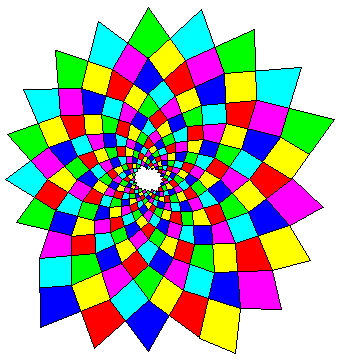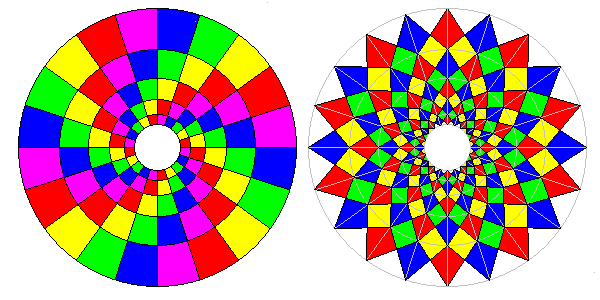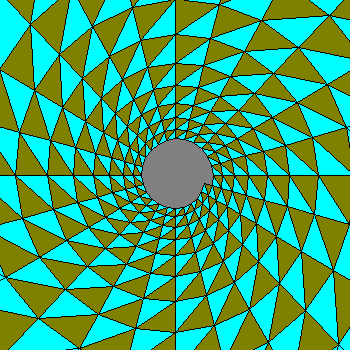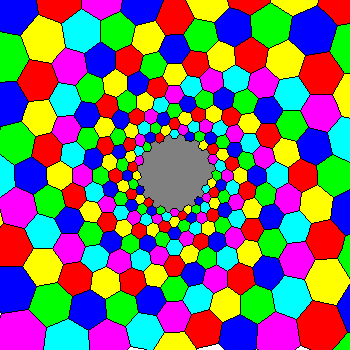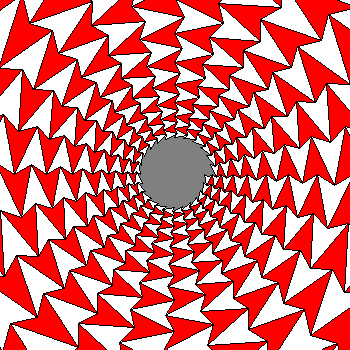 |
A logarithmic spiral has the polar equation r=exp(ka) where r is the
radius and a is the azimuth. It has the property that the curve makes a
constant angle with the radius. Thus, a logarithmic spiral divided into
equal radial sectors is a tesselation of geometrically similar tiles,
differing only in size
k is a parameter that determines how fast the spiral uncoils. If the
radius increases by a factor of q per revolution, then r(a+2pi) = qr(a),
exp(ka+2kpi) = q exp(ka), and, taking natural logarithms of both terms, ka
+ 2kpi = ln q + ka. Thus k = (ln q)/2pi. |


